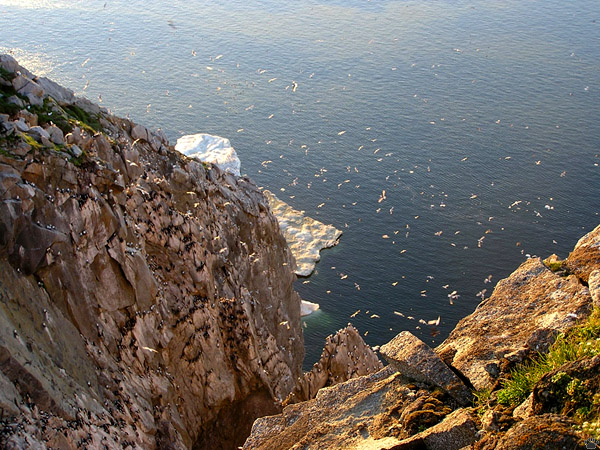
Rocks of Kolyuchin Island, Chukotka, Russia. |
Chukotka, part 2: Kolyuchin Island
The Chukchi Peninsula has a lot of small offshore islands. Many of them are very beautiful, and have huge seabird colonies and walrus rookeries. A good example is Kolyuchin Island off the northern coast. Its name comes from Chukchi word keglyuchin, which means an old, mean-spirited male walrus.

Aerial view of Kolyuchin Island. |

Summit plateau, Kolyuchin Island. |
The island, located just a few miles offshore, has no human residents. There are only ruins of a Soviet research station, and a cabin used by native hunters from a nearby village. |
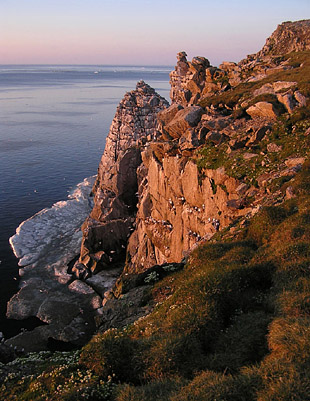
Summer midnight, Kolyuchin Island. |
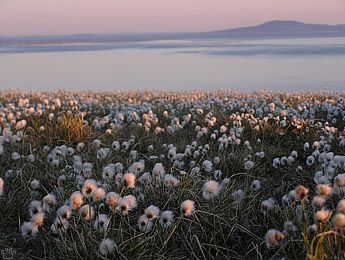 |
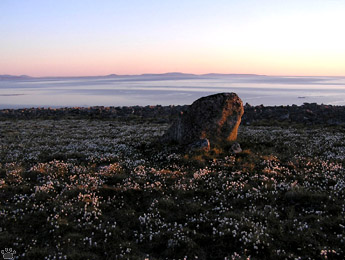 |
| Cotton grass (Eriophorum), summit plateau of Kolyuchin Island. |
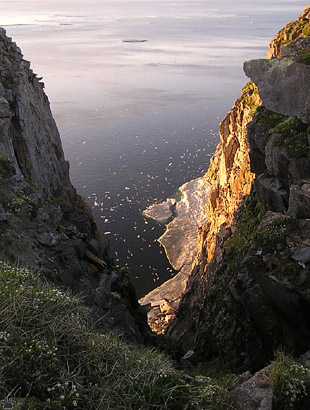
Seabird flocks over Kolyuchin Island. |
Except for the southern cape, the island is surrounded by rocky cliffs and steep talus slopes, leading to the summit plateau. The plateau is a sea of broken rock with a few beautiful meadows. |
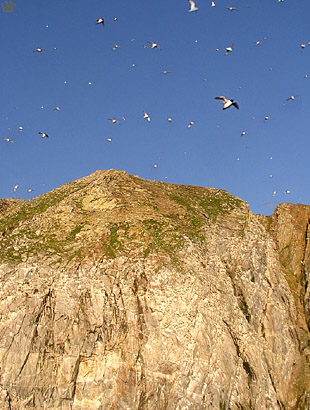
Seabird flocks over Kolyuchin Island. |
 |
 |
| Rocks, Kolyuchin Island. |

Nesting seabirds, Kolyuchin Island. |
Ten species of seabirds nest in huge colonies on Kolyuchin. Other resident species include rare gyrfalcons (Falco rusticolus) and Baird's sandpipers (Calidris bairdii). |
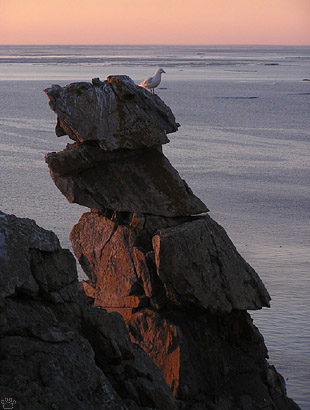
Glaucous gull, Kolyuchin Island. |

Glaucous gull (Larus hyperboreus), Kolyuchin Island. |

Glaucous gull chick,
Schmidt Cape, Chukotka. |
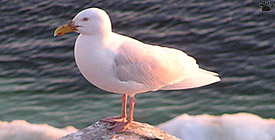
Glaucous gull, Kolyuchin Island. |
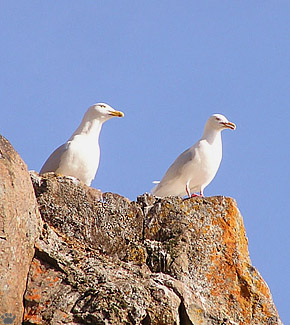
Glaucous gulls, Kolyuchin Island. |
Glaucous gull is called "burgmeister" (city governor) in Russian, because other seabirds pay it "taxes" with their eggs and chicks. It is the most carnivorous seabird of the High Arctic. It nests in its own colonies, or around large colonies of other seabirds. |

Glaucous gull, Kolyuchin Island. |
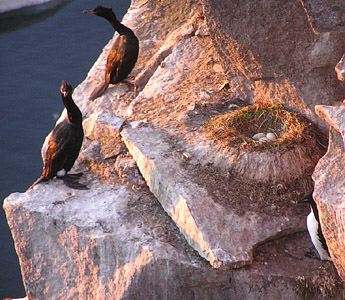 |
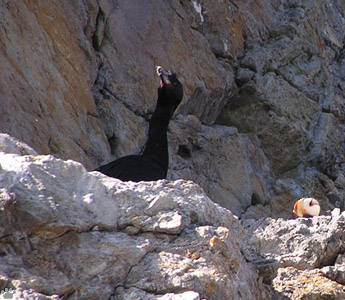 |
| Pelagic cormorants (Phalacrocorax pelagicus), Kolyuchin Island. |
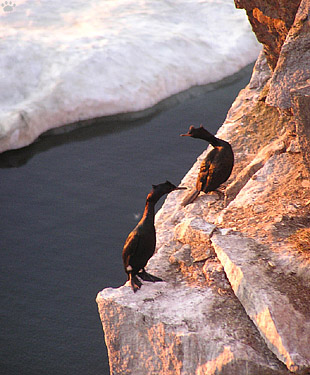
Pelagic cormorants, Kolyuchin Island. |
Smaller, more numerous kittiwakes (right) feed almost entirely on fish, so they nest peacefully side by side with murres, guillemots, puffins, and other colonial seabirds. |
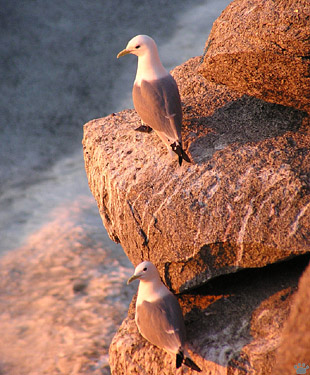
Black-legged kittiwakes (Rissa tridactyla), Kolyuchin Island. |
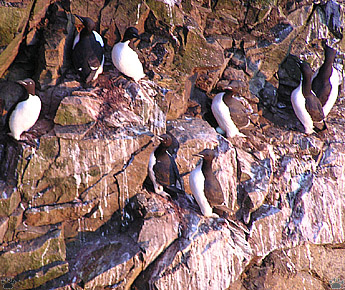
Thick-billed murres (Uria lomvia), Kolyuchin Island. |
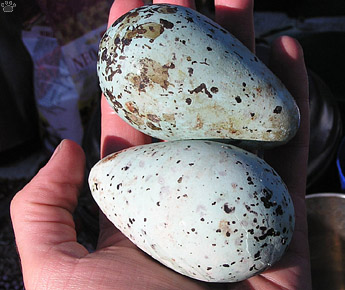
The shape of murre eggs is an adaptation to nesting on narrow cliff shelves. |
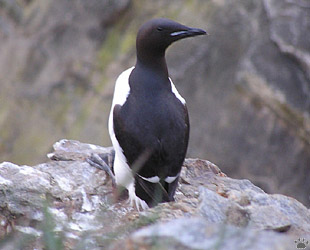
Thick-billed murre, Kolyuchin Island. |
Thick- billed murre and black- legged kittiwake are the most common seabirds of Northern Chukotka. |
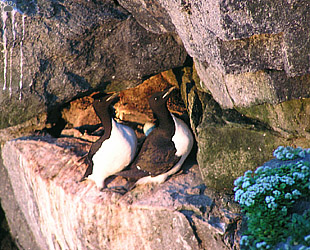
Thick-billed murres, Kolyuchin Island. |
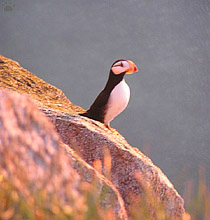 |
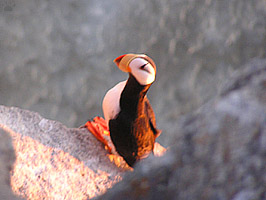
Horned puffins (Fratercula corniculata), Kolyuchin Island. |
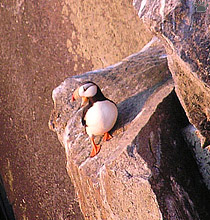 |

Tufted puffin (F. cirrhata), Kolyuchin Island. |
Puffins often nest in burrows on smaller islands, but on Kolyuchin they prefer to nest in rock crevasses to avoid predation by Arctic foxes. |

Tufted puffin, Kolyuchin Island. |

Arctic fox (Vulpes lagopus) Kolyuchin Island, Chukotka. |
Part 3. Coastal spits
Back to Part 1
Home
|






























